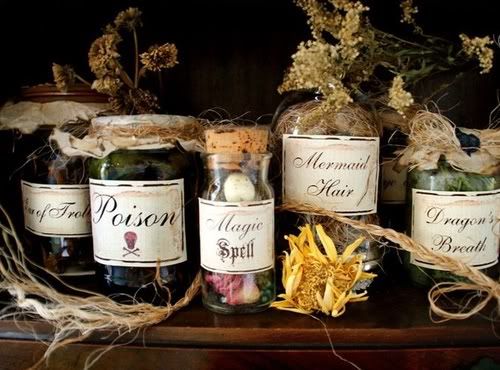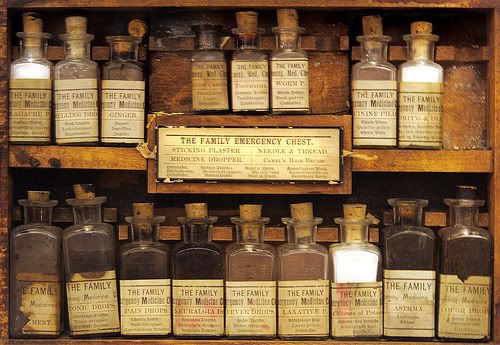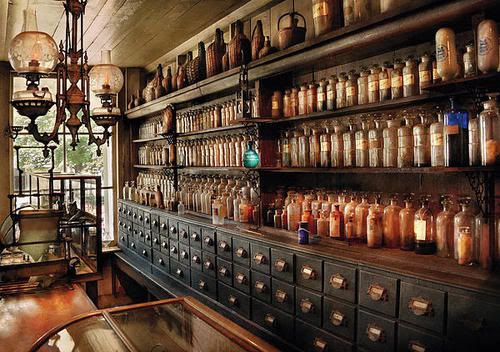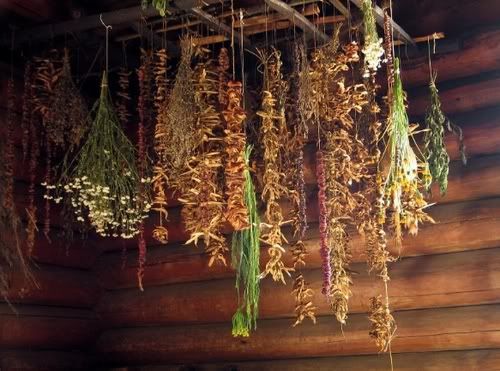Traveling within the World
Linking your favorite traveling artists across the globe
Cauldron of Oils & Aromatherapy
Information
The practice of Aromatherapy is reputed to be at least 6,000 years old ~
The consensus of opinion is that Aromatherapy began in Egypt. A papyrus (ancient Egyptian manuscript), dating back to around 1555BC, details remedies for various types of illnesses. The methods described for curing these ailments bear a striking resemblance to today's Aromatherapy.
It is clear that the Egyptians used a process to extract oils from aromatic plants for use in medicinal remedies. Incense appears to be one of the earliest ways of using these aromatic extracts. There are records of Frankincense being burnt at sunrise as an offering to the sun god. The Egyptians also used aromatic portions during the procedure of embalming. It was also common practice for Egyptians to be massaged with fragrant oils after bathing.
The Greeks continued with the use of aromatic extracts and developed their applications for medicinal purposes. Pedacius Dioscorides, a Greek physician, compiled a reference book of herbal medicines called "De Materia Medica". This book was used in the Western world for at least 1,200 years. In fact, some of the remedies suggested by Dioscorides are still in use today, in Aromatherapy.
The Romans based their medical knowledge on the Greeks, but went on to improve the composition of aromatic extracts. They started to import new aromatic ingredients from Arabia and East India.
Because of the rapidly expanding trade routes, Arabia and the Far East soon adopted the practice of using aromatic extracts for varying applications.
It was an Arab physician called Avicenna, who lived from AD980 to AD1037 who first used a process resembling modern methods of distillation. The Arabs were also the first to distil alcohol. They were therefore, able to produce lighter perfumes that were not heavy oil based.
There is much evidence to suggest that ancient Chinese civilisations, at the same time as the Egyptians, were also using aromatic extracts for medical purposes. In fact, the oldest surviving medical book in China, (dated around 2,700BC and written by Shen Nung, contains cures involving over three hundred different aromatic herbs.
Records exist which also suggest that traditional Indian medicine, known as Ayurveda, has practised a form of Aromatherapy for over 3,000 years.
When the Conquistadores invaded South America, they discovered that the Aztecs used many aromatic herbs and oils as medicinal remedies. The North American Indians also used aromatic plant extracts to cure ailments.
It was not until the nineteenth century that Europe started to explore the benefits of using essential oils as health remedies. Later in the twentieth century, a French chemist, named René Maurice Gattefosse, researched the effects of using lavender oil for healing skin damaged by burns. He was impressed with the results and went on to coin the word Aromatherapy. He later set up a business producing oils for use in cosmetics. At about the same time another Frenchman, Albert Couvreur, published a book on the applications of essential oils in medicine.
From theses French studies, Aromatherapy as we know it today, evolved and became extremely popular.
Essential Oil Disclaimer:
Personnel upon the Hearth do not claim to be medical practitioners. We do not diagnose, treat or prescribe any medical treatment or advice. You should always discuss treatment of medical conditions with your medical practitioner before using any alternative therapies, natural supplements, or vitamins. The following safety precautions are guidelines only. You should consult with any aromatherapist about essential oil usage and always inform your primary care physician what you are using as they may not be conducive with his/her prescribed therapy and medications.
1. Keep Essential Oils in a secure place away from children and pets.
2. Use a variety of essential oils and rotate those which you use often to avoid sensitization and irritation. If you use a blend for 3 days, take a minimum of 3 days off and use an alternate blend those 3 days.
3. The following essential oils should be avoided during pregnancy: Single Oils: Basil, birch, calamus, cassia, cinnamon bark, hyssop, Idaho tansy, jasmine, lavandin, mugwort, rosemary, sage, tarragon, thyme, wintergreen. Synergistic Blends: Female Blend, Male Blend Use the following with caution: Single Oils: Angelica, cedarwood, chamomile (German/blue), cistus, citronella, clary sage, clove bud, cumin (Black), cypress, davana, fennel, bay laurel, marjoram, mountain savory, myrrh, nutmeg, peppermint, rose, spearmint, vetiver, yarrow . Synergistic Blends: Clarity Blend, Muscle Relaxing Blend, Four Thieves. Other Products: Ahhh!, Arnica Massage Oil.
4. Read and follow instructions carefully.
5. Always take precautions with using Aromatherapy.
6. Unless otherwise stated, never use essential oils on your skin without diluting the essential oil with a carrier oil. A skin test is recommended prior to use. If you experience any soreness, redness or irritation do not use the blend.
7. If an essential oil or essential oil blend gets into your eye, flush the eye immediately with a carrier oil or cold milk. Seek medical attention if the stinging and/or irritation continues.
8. Do not use more than 2 drops of the following essential oils when used in a bath the first time: Aniseed, Black pepper, Camphor (rectified), Citronella, Clove, Eucalyptus globulus, Ginger, Juniper, Peppermint, Sage, Spearmint, Thyme.
9. If allergic to certain foods, do not use essential oils or carrier oils that come from those foods.
10. The following essentials oils should never be used on the skin: Alan Root (Inula helenium) Almond bitter, expressed Birch sweet, Birch tar, Boldo leaf, Cade, Camphor (brown, yellow, unrectified), Colophon, Costos Root, Fig Leaf abs, Horseradish Mustard (volatile), Opoponax , Peru balsam , Rue abs , Sassafras, Tolu, Turpentine unrectified, Verbena (from citriodora).
11. Essential oils do not necessarily have the same healing properties of the plant it comes from. Herbal products sometimes contain different chemical components than the essential oil derived from the same plant. Therapeutic results are generally experienced when using an herbal product
from that of a blended essential oil, however it is not guaranteed. Beware of sites that tell you otherwise.
12. The following essential oils should be avoided if you have epilepsy: Cajeput, Camphor, Eucalyptus, Fennel, Peppermint, Rosemary
All information, content and product descriptions contained within this site are for reference purposes and are not intended to substitute advice given by a pharmacist, physician or other licensed health-care professional. We do not advise you use the information contained within this website, or any other site for treating a health problem or disease or to make a self-diagnosis, without talking to your doctor. Actual product packaging and materials may contain different information than shown on this website. Contact your health care provider immediately if you suspect that you have a medical problem. Information and statements regarding our products have not been evaluated by the FDA.
Discussion Forum
Four thieves oil:
Started by Dept of PMM Artists & things Feb 9, 2014.
How to Make Your Own Essential Oils by The Crafty Coven
Started by Dept of PMM Artists & things Feb 5, 2014.
My Top 8 Herbal Essential Oils
Started by Dept of PMM Artists & things Jan 31, 2014.
Magical Uses of Essential Oils by Beverly Lawson
Started by Dept of PMM Artists & things Jan 22, 2014.
Aromatherapy Secrets by Bre Geier
Started by Dept of PMM Artists & things Jan 19, 2014.
Spiritual Incense by Christine Narducci
Started by Dept of PMM Artists & things Jan 11, 2014.
Aromatherapy 2 Replies
Started by Dept of PMM Artists & things. Last reply by Dept of PMM Artists & things Jan 11, 2014.
Dragon's Blood by Francisco Valdivia
Started by Dept of PMM Artists & things Jan 9, 2014.
A Cleansing Incense (A Cleansing Spell) by The Smart Witch
Started by Dept of PMM Artists & things Jan 3, 2014.
ORGANIC ROSEWOOD ESSENTIAL OIL USES http://theorganicwitch.com/Rosewood_Organic.html
Started by Dept of PMM Artists & things Jan 3, 2014.
ORGANIC BORAGE CARRIER OIL (borago officinalis) http://theorganicwitch.com/Organic_Carrier_Oils.html#borage
Started by Dept of PMM Artists & things Jan 3, 2014.
A Balm For Abundance byDonna Morgan 7:18in the evenin' Jan 2
Started by Dept of PMM Artists & things Jan 2, 2014.
Oils and Oil Recipes by helela
Started by Dept of PMM Artists & things Dec 13, 2013.
Poweder Recipes by helela
Started by Dept of PMM Artists & things Dec 13, 2013.
Ointments and Ointment Recipes by helela
Started by Dept of PMM Artists & things Dec 13, 2013.
Perfumes and Colognes by helela
Started by Dept of PMM Artists & things Dec 13, 2013.
An Aromatic Wheel of the Year by Sandra Kynes 4 Replies
Started by Dept of PMM Artists & things. Last reply by Dept of PMM Artists & things Dec 13, 2013.
Essential oils for bruising and muscle aches or minor tears & strains by John Hagan
Started by Dept of PMM Artists & things Nov 24, 2013.
Magical and Medicinal: Frankincense and Myrrh - by Gentle World
Started by Dept of PMM Artists & things Nov 16, 2013.
Ritual Salt Blends
Started by Dept of PMM Artists & things Nov 16, 2013.
Comment Wall
Comment
-
Comment by Dept of PMM Artists & things on February 5, 2014 at 4:57pm
-
Fortune Teller
INCENSE TO WARD OFF GHOSTS
3 oz. Juniper Leaves 4 tbsp. Dried Rosemary 2 oz. Fennel Seeds
2 tsp. Basil 3 tsp. Linden Flowers 2 tsp. Angelica Pinch of Salt
-
Comment by Dept of PMM Artists & things on January 31, 2014 at 3:19pm
-
The Craft of the Wise

COME TO ME OIL
Try pure essential oil of sweet pea. It draws people
to you. Diluted with perfume diluant and used on the
clothing it will help you pick up girls in bars. It is
very nice, but it draws all kinds of people, and you
-
Comment by Dept of PMM Artists & things on January 31, 2014 at 3:18pm
-
The Craft of the Wise

CONFUSION OIL
Vetivert
Lavender
Galangal
Burnt knotted shoelace
color: blackConfuses one who is trying to cast a spell on you. Good for
breaking curses and hexes.
Works very well.
-
Comment by Dept of PMM Artists & things on January 26, 2014 at 1:36pm
-
Witch

Incense is a popular tool used by witches. It often consists of powdered herbs and resins that have been made into a paste then rolled and dried onto a stick. When burned, incense often give off a pleasing aroma. The smoke of incense can purify a space and bring into it various qualities depending on the scent used. The smoke from incense travels in all directions out to the universe, carrying the intentions of the witch with it.
-
Comment by Dept of PMM Artists & things on January 23, 2014 at 1:13pm
-




-
Comment by Dept of PMM Artists & things on January 19, 2014 at 1:31pm
-

-
Comment by Dept of PMM Artists & things on January 19, 2014 at 1:24pm
-

-
Comment by Dept of PMM Artists & things on January 19, 2014 at 12:51pm
-

-
Comment by Dept of PMM Artists & things on January 12, 2014 at 5:36pm
-

-
Comment by Dept of PMM Artists & things on January 10, 2014 at 11:25am
-
Marti Finizio 10:49in the mornin' Jan 10
Blessing Oil--1 to 4 lavender blossoms
--2 drops each sage, basil, patchouli essential oil
--Carrier oil
(can be olive used for protection, almond, sunflower, etc.)Choose a small dark vial. Place all but the oil in the vial together, then add enough oil to fill the bottle. Shake thoroughly. Use for anointing ritual candles, self, consecrating tools, etc. Lavender is there for purification, happiness, love, and peace; Basil brings protection and love; Sage brings purification, protection, healing, wealth, longevity; Patchouli brings prosperity, wards off evil and negativity, aids divination.
All of these are desirable generic attributes so makes a good blend for general purposes. Great for keeping on your personal altar for magical workings.
Events
-
2014 is the Chinese Year of the Horse
February 17, 2026 at 12am to February 5, 2027 at 12am – where & how you choose
Birthdays
There are no birthdays today
Important (read & understand)
Skype: Travelingraggyman
Email and Instant Messenger:
TravelerinBDFSM @ aol/aim; hotmail; identi.ca; live & yahoo
OR
Travelingraggyman @ gmail and icq ***

1AWARD UPDATES & INFORMATION
10,000 votes - Platinum Award
5,000 votes - Gold Award
2,500 votes - Silver Award
1,000 votes - Bronze Award
300 votes - Pewter Award
100 votes - Copper Award
Member of the Associated Posting System {APS}
This allows members on various sites to share information between sites and by providing a by line with the original source it credits the author with the creation.
Legal Disclaimer
***************We here at Traveling within the World are not responsible for anything posted by individual members. While the actions of one member do not reflect the intentions of the entire social network or the Network Creator, we do ask that you use good judgment when posting. If something is considered to be inappropriate it will be removed
Site Meter
This site is strictly an artist operational fan publication, no copyright infringement intended
Patchwork Merchant Mercenaries had its humble beginnings as an idea of a few artisans and craftsmen who enjoy performing with live steel fighting. As well as a patchwork quilt tent canvas. Most had prior military experience hence the name.
Patchwork Merchant Mercenaries.
Vendertainers that brought many things to a show and are know for helping out where ever they can.
As well as being a place where the older hand made items could be found made by them and enjoyed by all.
We expanded over the years to become well known at what we do. Now we represent over 100 artisans and craftsman that are well known in their venues and some just starting out. Some of their works have been premiered in TV, stage and movies on a regular basis.
Specializing in Medieval, Goth , Stage Film, BDFSM and Practitioner.
Patchwork Merchant Mercenaries a Dept of, Ask For IT was started by artists and former military veterans, and sword fighters, representing over 100 artisans, one who made his living traveling from fair to festival vending medieval wares. The majority of his customers are re-enactors, SCAdians and the like, looking to build their kit with period clothing, feast gear, adornments, etc.
Likewise, it is typical for these history-lovers to peruse the tent (aka mobile store front) and, upon finding something that pleases the eye, ask "Is this period?"
A deceitful query!! This is not a yes or no question. One must have a damn good understanding of European history (at least) from the fall of Rome to the mid-1600's to properly answer. Taking into account, also, the culture in which the querent is dressed is vitally important. You see, though it may be well within medieval period, it would be strange to see a Viking wearing a Caftan...or is it?
After a festival's time of answering weighty questions such as these, I'd sleep like a log! Only a mad man could possibly remember the place and time for each piece of kitchen ware, weaponry, cloth, and chain within a span of 1,000 years!! Surely there must be an easier way, a place where he could post all this knowledge...
Traveling Within The World is meant to be such a place. A place for all of these artists to keep in touch and directly interact with their fellow geeks and re-enactment hobbyists, their clientele.
© 2025 Created by Rev. Allen M. Drago ~ Traveler.
Powered by
![]()




You need to be a member of Cauldron of Oils & Aromatherapy to add comments!